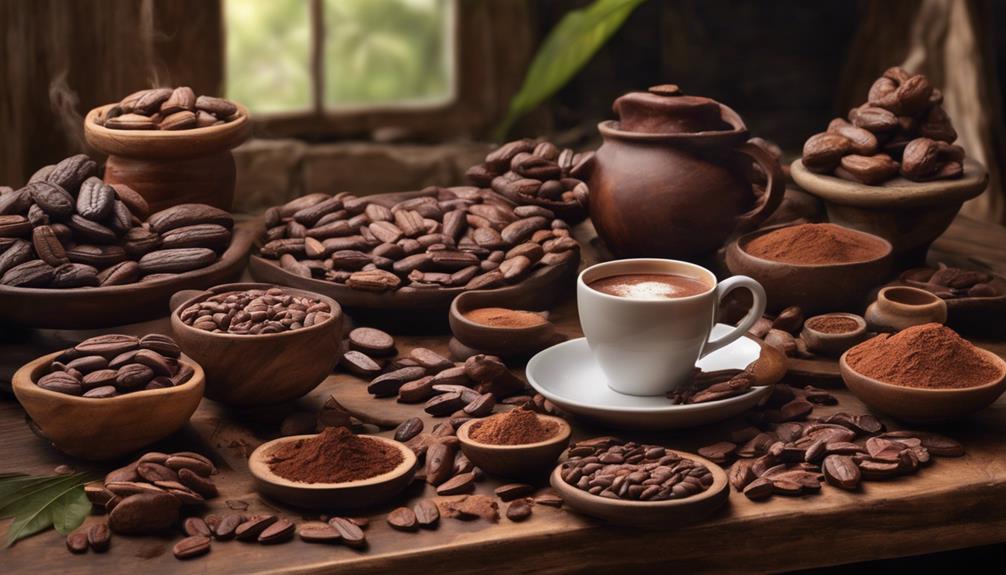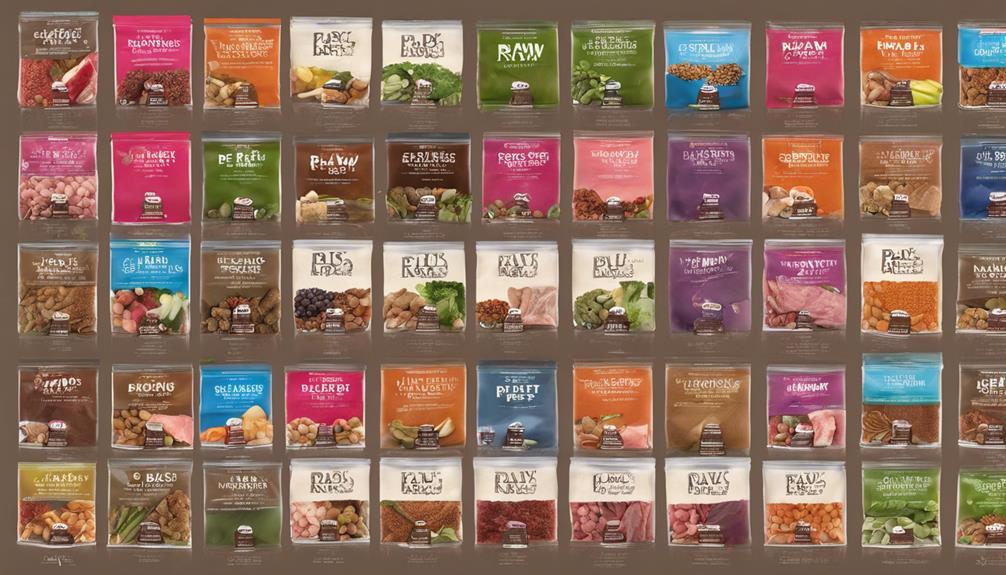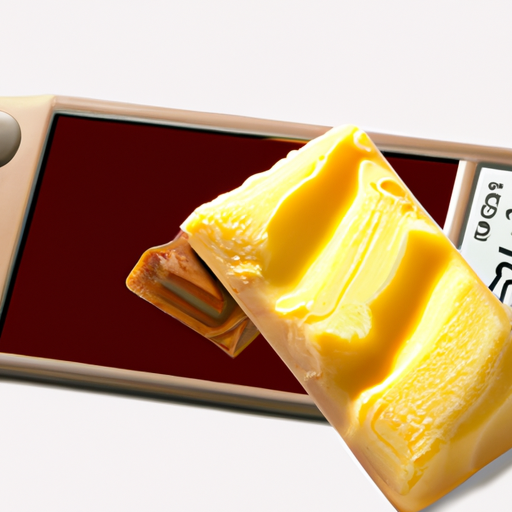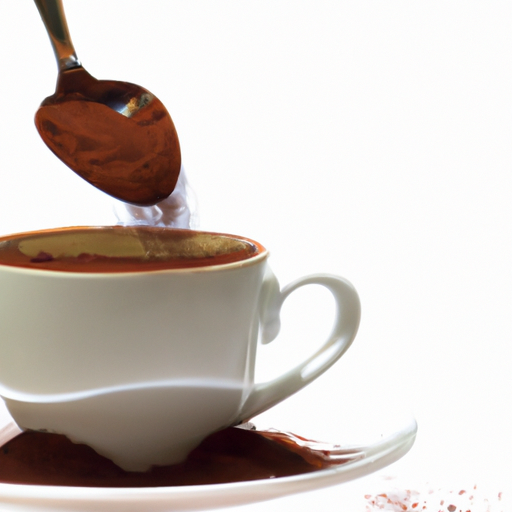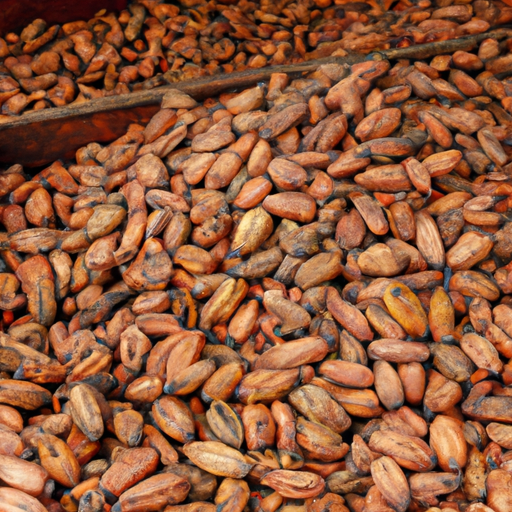Welcome to the ultimate cacao ritual guide! Cacao rituals have a long history dating back to civilizations such as the Mayans and Aztecs, who considered cacao to be a sacred elixir that bridged the gap between the earthly and divine realms. Today, by combining ancient wisdom with modern practices, cacao ceremonies provide mood-boosting benefits thanks to its rich nutrients like magnesium and antioxidants, which support heart health and emotional well-being. Setting intentions for your ceremony is crucial for personal growth, and following preparation tips such as staying hydrated and wearing comfortable attire can enhance the experience.
Engage in guided activities like meditation and sound healing to deepen your connection to this sacred ritual. If you're curious to learn more, there's a wealth of information awaiting you in this guide!
Key Takeaways
- Set clear intentions for personal growth and healing.
- Use ceremonial-grade cacao for authentic experience.
- Engage in guided activities like meditation and journaling.
- Foster a supportive environment for emotional expression.
- Explore various enhancements to deepen the ritual experience.
Origins of Cacao Rituals
Cacao rituals find their roots in the ancient traditions of Mesoamerican civilizations like the Mayans and Aztecs. The indigenous people revered cacao as a ceremonial and spiritual elixir, considering it a sacred gift from the gods. It wasn't just a beverage but a bridge between the earthly domain and the divine.
European colonial influence later altered these ancient traditions, commercializing cacao and diluting its spiritual essence. However, in recent times, there's been a modern revival of cacao rituals, blending the wisdom of the past with contemporary spiritual practices. The concept of cacao as the 'food of the gods' remains a central theme in these ceremonies, symbolizing a connection to the spiritual domain and the divine energy that cacao embodies.
This revival aims to honor the ancient traditions of the Mesoamerican civilizations, bringing back the spiritual significance and reverence that cacao once held in ceremonial practices.
Health Benefits of Cacao Ceremony
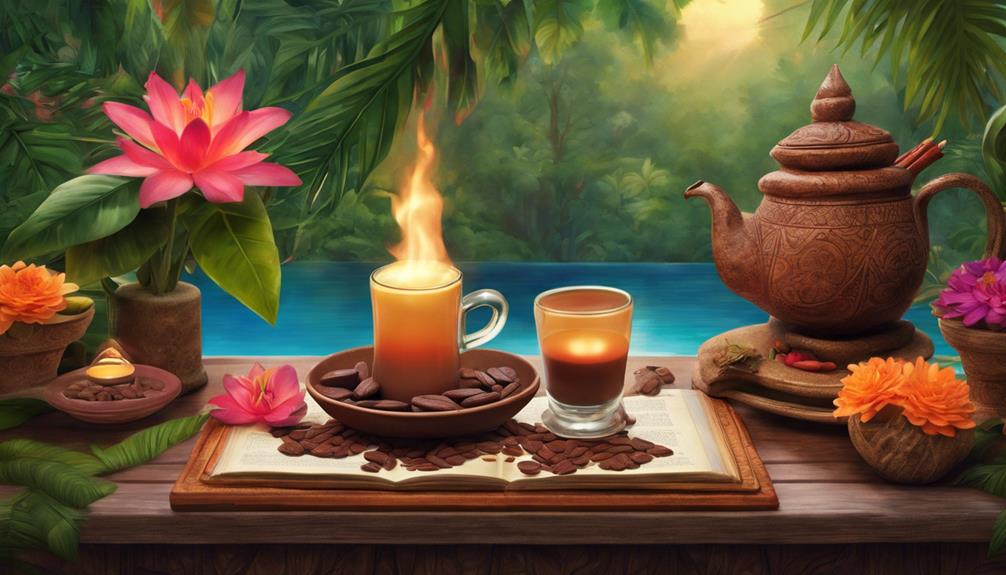
Cacao ceremonies hold an array of health benefits that cater to both the mind and body. From boosting mood and energy levels to supporting heart health, cacao rituals offer a holistic approach to overall well-being.
Engaging in these ceremonies provides a unique opportunity to explore the mind-body connection and promote healing on multiple levels.
Cacao and Wellbeing
Partaking in a cacao ceremony can greatly enhance overall wellbeing by tapping into the abundant array of nutrients and antioxidants found in this potent superfood. Cacao, rich in magnesium, iron, calcium, potassium, B & E vitamins, heart-healthy fats, protein, and fiber, contributes to our health. With 40 times more antioxidants than blueberries, it supports heart health, mood regulation, and acts as a natural mood enhancer. These ceremonies offer emotional release, creative awakening, and heightened intuition. They promote cardiovascular health, emotional and psychological benefits, and spiritual practices like heart opening and intuitive insights. Regular consumption elevates mood, provides sustained energy, and supports cardiovascular health, ultimately enhancing our overall wellbeing.
| Nutrients & Antioxidants | Cardiovascular Health | Emotional Release |
|---|---|---|
| Magnesium | Supports heart health | Provides emotional release |
| Iron | Aids cardiovascular system | Promotes creative awakening |
| Antioxidants | Enhances blood flow | Supports intuitive insights |
| Calcium | Strengthens heart muscles | Promotes mindfulness |
| B & E Vitamins | Regulates mood | Enhances overall emotional wellbeing |
Ritual for Healing
During a cacao ceremony focused on healing, one may experience a profound sense of emotional release and connection. The ritual isn't just about drinking cacao; it's a journey of self-discovery and healing.
Here are some health benefits of a cacao ceremony:
- Emotional Well-Being: Cacao ceremonies can promote emotional well-being by allowing participants to release negative emotions and foster a sense of inner peace.
- Antioxidants: Cacao is rich in antioxidants, which can help protect the body against damage from free radicals and support overall health.
- Heart Health: Regular consumption of cacao during ceremonies may aid in heart health by improving circulation and lowering blood pressure, contributing to a healthier cardiovascular system.
Mind-Body Connection
Experiencing a cacao ceremony fosters a profound connection between the mind and body, enhancing overall well-being through its rich antioxidant properties.
The cacao ceremony recipe, when consumed, supports cardiovascular health, uplifts mood, and sustains energy levels.
Cacao's natural antidepressant elements play a pivotal role in boosting emotional wellness and facilitating cathartic releases during ceremonies.
Participants in cacao rituals often report heightened intuition, emotional purging, and a deep sense of belonging within the community.
By engaging in cacao ceremonies, individuals can reap physical, emotional, and spiritual benefits that markedly boost their overall well-being and mindfulness.
Embrace the transformative power of cacao ceremonies to nurture your mind-body connection and cultivate a sense of harmony within yourself and the world around you.
Setting Intentions for Cacao Rituals
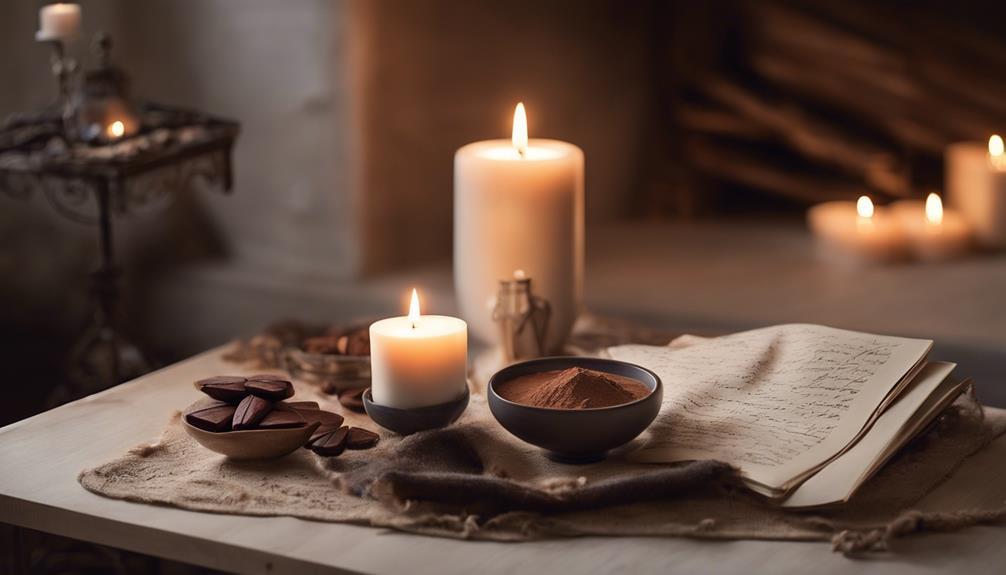
When getting ready for a cacao ritual, it's crucial to establish clear intentions that center on what you hope to accomplish during the ceremony.
These intentions serve as guiding beacons, assisting you in directing your energy towards particular objectives such as personal development, emotional healing, or spiritual connection.
Intentions in Cacao Rituals
Setting intentions for cacao rituals involves focusing on specific goals or desires one wishes to manifest during the ceremony. When setting intentions for your cacao ritual, consider the following:
- Personal Goals: Think about what you personally hope to achieve or experience during the ceremony.
- Emotional Desires: Reflect on the emotional states you want to cultivate or release.
- Spiritual Growth: Consider how you can deepen your spiritual connection or engage in personal growth through the ritual.
Focus and Clarity
To enhance the focus and clarity of your cacao ritual, it's important to establish clear and heartfelt intentions that guide your energy and attention towards specific goals or desires. Setting intentions for your cacao ritual helps you define the purpose and desired outcome of the ceremony.
By focusing your energy on these intentions, you can direct your subconscious mind towards the transformative experience you seek. Be specific and sincere when setting intentions, as this will shape the energy you bring to the cacao ritual.
Whether your intentions revolve around personal growth, emotional healing, spiritual insights, creativity, or connecting with others, clarity in your intentions is key to making the most of your cacao ceremony.
Manifesting With Cacao
During a cacao ritual, I infuse the ceremonial cacao with my deepest desires, envisioning their manifestation with unwavering focus. Setting intentions for a cacao ceremony allows me to align my energy and thoughts towards specific outcomes.
Here's how you can make the most of manifesting with ceremonial cacao:
- Focus on Your Desires: Concentrate on what you truly wish to bring into your life during the ritual.
- Visualize Intently: Picture your desired outcomes clearly in your mind while consuming the ceremonial cacao.
- Align Your Energy: Let the energy of the cacao and your focused intentions work together to amplify the manifestation process.
Embrace the power of setting intentions and manifesting with cacao for a transformative ritual experience.
Preparation Tips for Cacao Ceremony
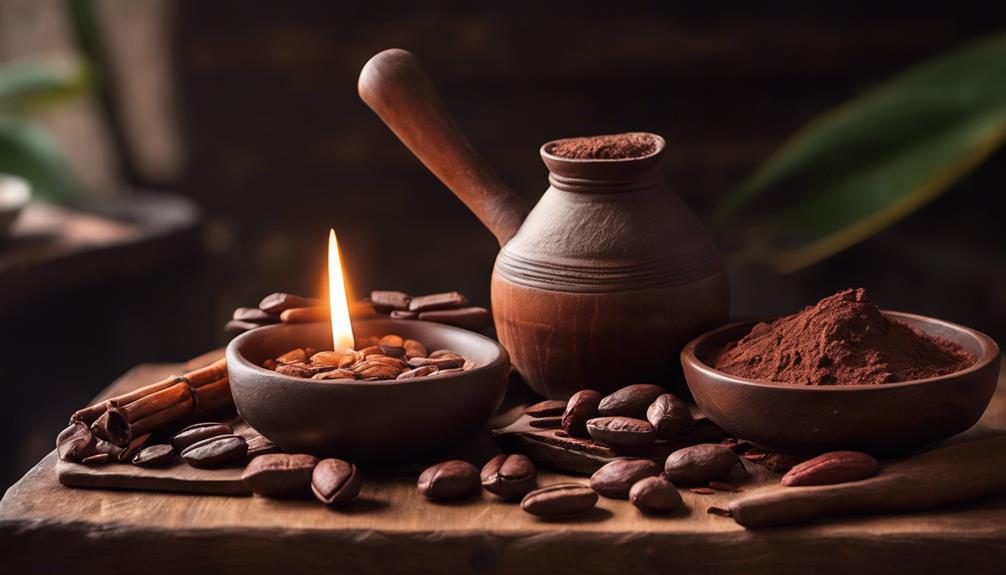
Ensuring adequate hydration before a cacao ceremony is vital for maximizing its absorption and effects. Hydrating helps the body prepare to fully embrace the cacao's benefits. Appropriate attire is also essential; it allows for unrestricted movement and promotes relaxation during the ceremony. Grounding practices on the day of the event help in fostering a focused and present mindset, enhancing the overall experience. Personalized cacao blends can be tailored to individual preferences, elevating the ceremony's impact. Additionally, abstaining from caffeine before the ceremony can intensify the effects of the cacao, leading to a more profound experience. Below is a table summarizing these key preparation tips for your upcoming cacao ceremony:
| Preparation Tips | Description |
|---|---|
| Hydration | Drink plenty of water beforehand to aid absorption. |
| Comfortable Attire | Wear loose, comfortable clothing for ease of movement. |
| Grounding Practices | Engage in activities that help you stay present. |
| Personalized Blends | Customize your cacao mix for a unique experience. |
| Caffeine Abstinence | Avoid caffeine to enhance the effects of cacao. |
Role of Facilitator in Cacao Ritual

As we explore the role of a facilitator in a cacao ritual, we'll look at their guiding presence, energy connection, and the importance of their actions during the ceremony.
The facilitator's role involves guiding participants through the ritual, connecting energetically with the group, and maintaining a sacred space for emotional exploration.
Understanding how facilitators navigate these aspects is key to appreciating their significance in the cacao ritual experience.
Facilitators Guiding Presence
Guiding participants through a cacao ritual, the facilitator's presence acts as a vital anchor, providing support and fostering a transformative experience. In this intimate journey, the facilitator plays an essential role in creating a safe space for emotional release and personal growth.
Here are three key aspects of a facilitator's guiding presence in a cacao ceremony:
- Spiritual Guidance: The facilitator serves as a spiritual guide, leading participants through meditation practices and sound healing to deepen the ritual experience.
- Emotional Anchors: By holding space for emotional release, the facilitator helps participants navigate their feelings and facilitates a transformative experience.
- Supportive Environment: Facilitators create a supportive environment that allows participants to explore their inner selves and connect with the healing properties of cacao.
Facilitators Energy Connection
In leading a cacao ritual, the facilitator's energetic connection with participants profoundly influences the ceremony's atmosphere and participants' experiences. As a spiritual guide and emotional anchor, facilitators hold the space for a transformative journey to unfold. Their energy sets the tone, creating a sacred space where participants can connect with the cacao spirit and explore introspection.
Through intentional practices like guided meditations and rituals, facilitators enhance the overall experience, guiding individuals towards emotional release and spiritual growth. Facilitators undergo training to refine their skills in creating a supportive environment, leading ceremonies with grace, and aiding participants on their journey.
This energy connection between facilitator and participants forms the heart of the cacao ritual, fostering a space for healing and connection.
Common Myths About Cacao Ceremonies
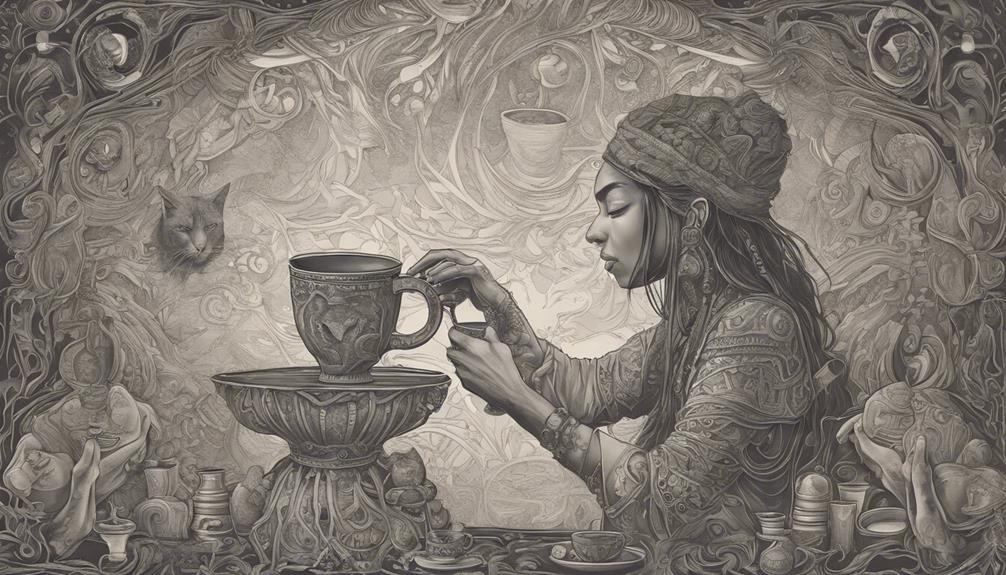
Common myths surrounding cacao ceremonies often stem from misunderstandings about the effects of ceremonial cacao. Here are some truths to debunk these myths:
- Myths vs. Facts: Many misconceptions revolve around cacao inducing hallucinogenic experiences. In reality, cacao contains theobromine, a gentle stimulant that enhances focus and uplifts mood without causing hallucinations.
- Accessibility to All: It's a myth that cacao ceremonies are reserved for spiritual or esoteric individuals. In truth, these ceremonies are open to anyone seeking emotional and spiritual growth, offering a safe space for introspection and healing.
- Plant Medicine Misconceptions: Some myths suggest that cacao ceremonies involve drug use. However, ceremonial cacao is a natural plant medicine with heart-opening and healing properties, utilized by modern practitioners for personal growth and well-being.
Choosing the Right Cacao
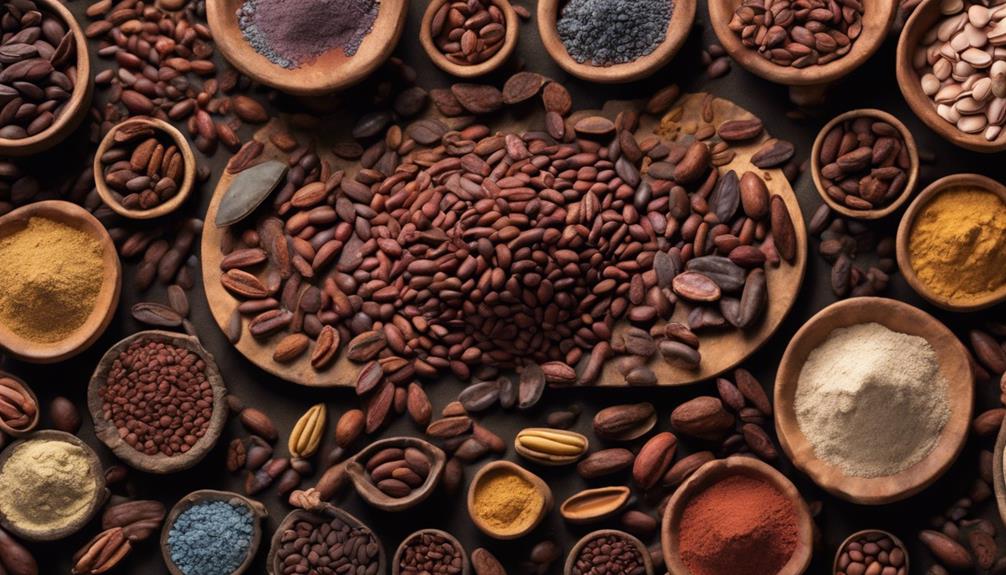
For the ideal cacao ritual experience, selecting ceremonial-grade cacao is vital due to its purity and potency. When choosing cacao for your rituals, it's essential to prioritize ethical sourcing practices. Opt for cacao sourced from farms that uphold sustainable and fair trade standards to guarantee an authentic and meaningful experience.
Consider the origin of the cacao as well; whether it's Guatemalan, Peruvian, or Ecuadorian, each origin offers different flavor profiles that can enhance your ritual. For a traditional touch, go for stone-ground cacao paste, known for its rich and textured consistency perfect for ceremonial consumption.
Additionally, choosing unroasted cacao beans, nibs, or powder is a great way to incorporate a raw and nutrient-dense option into your cacao rituals. By being mindful of these factors, you can elevate your cacao ceremony and create a more profound connection with the cacao you choose to work with.
Embarking on Cacao Ceremony Journey
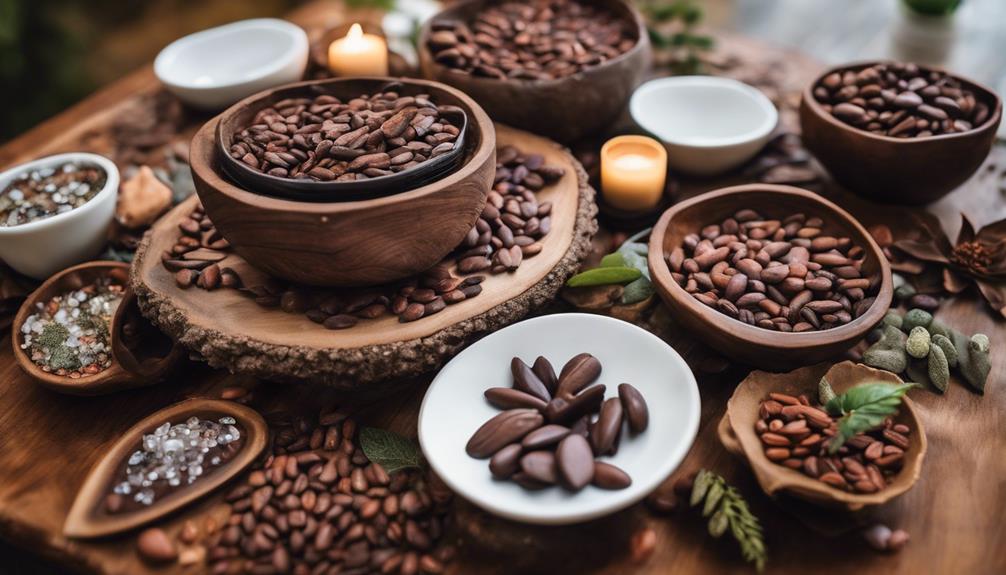
Commencing the journey of a Cacao ceremony involves establishing a clear intention for the experience, paving the way for a transformative and meaningful ritual. Here is a simple guide to help you set out on this enchanting journey:
- Setting Intention: Before the ceremony begins, take a moment to reflect on what you hope to gain from this experience. Setting a clear intention can guide your focus and enhance the impact of the ritual.
- Guided Activities: During the Cacao ceremony, participants often engage in various guided activities such as meditation, chanting, and sound healing. These activities help deepen your connection with the cacao and facilitate a profound inner journey.
- Community Connection: Sharing your personal experiences and insights within the community creates a sense of belonging and support. Embracing the collective energy can enhance the overall experience and foster deeper connections with others.
As you prepare to consume the sacred cacao in a warm cup prepared with intention, remember that the facilitators play a crucial role in creating a safe and sacred space for emotional and spiritual exploration. Trust in the process and allow yourself to fully immerse in this beautiful Cacao Ceremony journey.
Cacao Vs Cocoa: Understanding the Difference
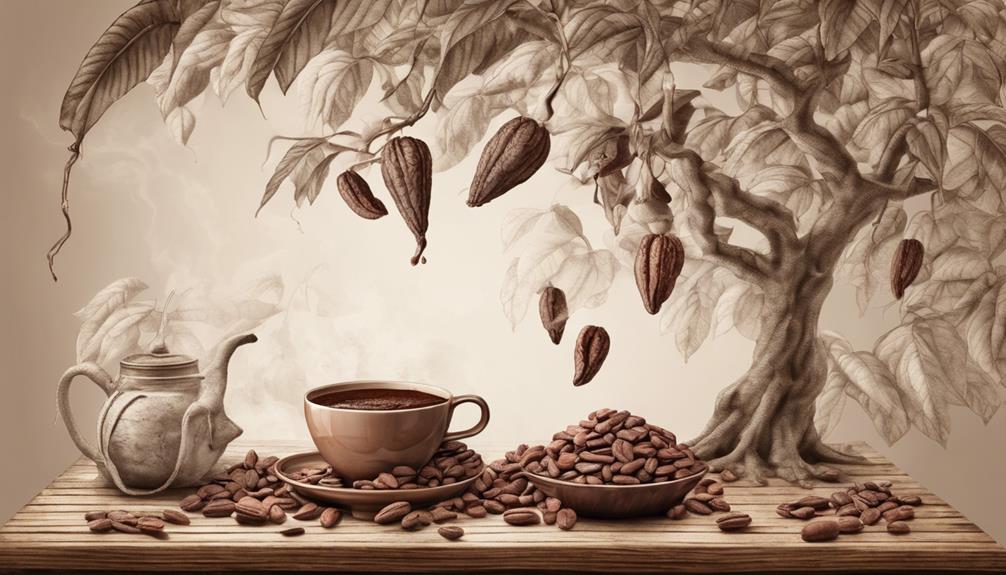
Distinguishing between cacao and cocoa is essential for understanding their distinct characteristics and uses in various culinary and ceremonial practices. Cacao, often referred to as the 'food of the gods,' is the raw, unprocessed form of the cacao bean. On the other hand, cocoa undergoes processing and may contain added ingredients like sugar and milk. Here's a quick comparison between the two:
| Category | Ceremonial Cacao | Processed Chocolate | Cacao Powder |
|---|---|---|---|
| Source | Cacao beans | Processed chocolate | Cacao beans |
| Purity | Ceremonial Grade Cacao | Lower purity | Cacao beans |
| Health Benefits | Abundant antioxidants | Reduced nutritional value | Nutrient-rich |
Cacao is cherished for its rich antioxidants and nutrients, making it a popular choice for ceremonial rituals and health-conscious individuals. In contrast, cocoa, found in many commercial chocolate products, may lose some of its nutritional value due to processing. When choosing between cacao and cocoa, consider your intention, whether it be for a ceremonial practice or reaping the health benefits of this divine ingredient.
Your First Cacao Ceremony Experience

Experiencing a cacao ceremony for the first time involves immersing oneself in a transformative ritual centered around personal growth and healing. Upon entering the ceremonial space, you're greeted with a unique cup of warm ceremonial-grade cacao, setting the tone for the journey ahead.
Here's what you can expect during your first cacao ceremony:
- Setting Intentions: Begin by setting your intentions for the ceremony, focusing on what you wish to release or manifest in your life.
- Guided Activities: Engage in various guided activities such as meditation, journaling, and sound healing to deepen your connection with yourself and the cacao spirit.
- Theme Sharing: Facilitators often lead theme and intention sharing, creating a supportive and transformative environment where participants can openly express their feelings and experiences.
Consider exploring San Diego options or hosting your DIY ceremony to enhance your cacao ceremony experience further.
Frequently Asked Questions
How to Do a Cacao Ceremony Step by Step?
I start a cacao ceremony by sourcing quality ceremonial cacao. I grind it into a paste and set intentions for the ritual. Creating a sacred space with calming elements, I consume the cacao mindfully for meditation and reflection.
What Do You Say in a Cacao Ceremony?
In a cacao ceremony, I express intentions, desires, and gratitude while sharing stories and insights. The language used is authentic, heartfelt, and supportive, enhancing our spiritual connection. Verbal affirmations and mantras deepen the collective energy.
How Much Cacao per Person for a Ceremony?
For the ceremony, I recommend around 42.5 grams of cacao per person. Starting with half that amount is wise for newbies. Over 55 grams may cause discomfort. Theobromine in cacao, like caffeine, affects us.
How Many Cups of Cacao per Day?
I should have no more than 2 cups of cacao each day to avoid side effects. Consuming excess cacao can cause jitteriness and a rapid heart rate. It's important to moderate intake to enjoy cacao's benefits without negative outcomes.
How Can Cacao Rituals Enhance Cake Filling?
Cacao rituals can enhance cake fillings by adding a unique flavor profile. Learning about cake fillings with a focus on cacao can lead to discovering new textures and taste combinations. Incorporating cacao into traditional cake fillings can elevate the overall dessert experience for chocolate lovers.
Conclusion
To wrap up, the cacao ritual guide offers a powerful way to connect with yourself and set intentions. For instance, Sarah used a cacao ceremony to initiate a journey for more peace and clarity into her life, and she found it to be a transformative experience.
By following the steps outlined in this guide, you too can start on your own cacao journey and discover the benefits of this ancient practice. Remember, the key is to set intentions and embrace the experience fully.

